Founded in Truth Fellowship - Bible Teachings and Sermons
Founded in Truth Fellowship is a Messianic Fellowship in Rock Hill, SC that provides Biblical teachings, fellowship, and resources for Biblical studies. Founded in Truth Fellowship is able to spread the gospel and the word of Yeshua because of supporters like you. If Founded in Truth has been a blessing to you or your family, we ask that you would give so that the same messages can bless others. To give to Founded in Truth Fellowship, click this link ”https://foundedintruth.com/give”
Episodes
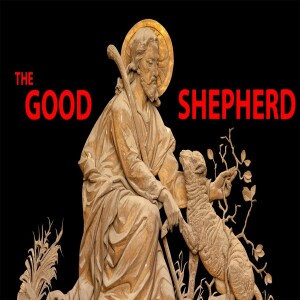
Saturday Oct 31, 2020
Saturday Oct 31, 2020
The Good Shepherd - Missed Connections
Understanding Yeshua as the Good Shepherd Through Old Testament Connections
This Bible teaching from Founded in Truth Fellowship, likely delivered by Matthew Vander Els, explores the deeper meaning behind the familiar passage in John chapter 10 where Yeshua (Jesus) describes himself as the good shepherd. The message emphasizes that the New Testament authors, including John, did not simply record historical events but intentionally crafted their narratives to show how Yeshua directly fulfills the prophecies and stories of the Old Testament. This particular teaching focuses on the connections between John's portrayal of Yeshua as the good shepherd and the Old Testament books of Numbers and Ezekiel.
The Context of John Chapter 10: Conflict and Identity
To grasp the full significance of Yeshua's words in John 10, it's crucial to understand the context provided in the preceding chapters of John. Chapters 7 through 9 detail increasing conflict between Yeshua and the Pharisees and religious leaders. Yeshua performed miracles and gave teachings that challenged their authority and identity. In John chapter 9, the healing of a blind man and the subsequent interrogation of both the man and his parents by the Pharisees highlight the religious leaders' resistance to Yeshua's divine actions and their concern for maintaining their own power. Their insistence that they were disciples of Moses and their rejection of Yeshua's origins set the stage for Yeshua's discourse on the good shepherd.
Yeshua, the Greater Joshua: A Transfer of Leadership
The teaching reveals that when Yeshua says in John 10 that the good shepherd calls his own sheep by name and leads them out, this echoes Numbers chapter 27. This chapter in the Torah describes the transfer of leadership from Moses to Joshua (Yehoshua, which in its shortened form is Yeshua) as Moses was nearing death. Joshua was appointed to shepherd the flock of Israel into the promised land. By alluding to this passage, Yeshua was making a powerful statement to the Pharisees: just as leadership transitioned from Moses to Joshua, a greater transfer of leadership was now taking place with him. He was claiming to be the legitimate leader of Israel, the one with God's spirit upon him, effectively suggesting that the current religious leaders had failed in their mandate. This would have been a direct challenge to their authority and their claim to be the true shepherds of the people who followed Moses.
Fulfillment of Ezekiel's Prophecies: God as Shepherd and the Davidic King
Furthermore, the teaching emphasizes how John's account of Yeshua as the good shepherd draws heavily from the prophecies of Ezekiel, specifically chapters 34 and 37. Ezekiel 34 speaks against the wicked shepherds of Israel who neglected and exploited the flock. God himself declares that he will search for his sheep, rescue them, and bring them back to their own land. Importantly, Ezekiel 34 also prophesies that God will place "one shepherd" over them, his servant David. This prophecy, written during the Babylonian exile long after King David's death, looked forward to a future Davidic king who would righteously shepherd Israel.
Yeshua's claim in John 10 to be the good shepherd was therefore not just a simple metaphor but a declaration that he was fulfilling these very prophecies from Ezekiel. By using this language, Yeshua was identifying himself with both Yahweh, the God who promises to shepherd his people, and the promised Davidic king. This would have been seen as a profound and potentially blasphemous claim by the Pharisees, who understood these Old Testament passages.
The teaching also connects John 10 to Ezekiel 37, the prophecy of the two sticks representing the divided kingdoms of Israel (Ephraim and Judah) being joined together under one king. Yeshua's gathering of twelve disciples is presented as a symbolic act of regathering the twelve tribes of Israel, signifying the reconstitution of the covenantal kingdom through him. He was proclaiming that the exile was ending and God's promises of reunification and restoration were being fulfilled in his person and ministry.
The Pharisees' Reaction and the Significance of Understanding the Old Testament
The response of the Jewish leaders to Yeshua's words in John 10 was one of intense anger, leading them to pick up stones to stone him for blasphemy. Their reaction demonstrates that they understood the implications of his claims and his allusions to the Old Testament scriptures. They recognized that he was positioning himself as the fulfillment of prophecies about God's own shepherding and the coming Davidic king, directly challenging their authority and their understanding of God's plan.
The teaching underscores the importance of understanding the Hebrew Bible to fully appreciate the identity and claims of Yeshua in the New Testament. Without recognizing these "missed connections" to the Old Testament, the depth and significance of passages like John 10 can be overlooked.
For more Bible Teachings, click the link.
Application for Everyday Life
Recognize Yeshua as your ultimate authority and leader: Just as Yeshua claimed to be the Good Shepherd and the fulfillment of leadership prophecies, we are called to acknowledge his Lordship in our lives.
Examine your own leadership and influence: Reflect on whether your actions and motivations are truly for the good of those you have influence over, or if they are driven by self-interest, as Yeshua critiqued the Pharisees.
Extend grace and mercy to others: Learn from the contrast between Yeshua's compassion for the marginalized (like the blind man) and the Pharisees' judgmental attitude. Avoid creating exclusive groups and instead embrace the diversity within God's flock.
Be open to God's work in unexpected people and places: Challenge any tendency to judge others based on their background or affiliations, recognizing that God's grace extends beyond our preconceived notions.
Deepen your understanding of the Old Testament: Recognize that the Old Testament provides crucial context for understanding the New Testament and the identity of Yeshua.
Reflect on who you look to for guidance and rest: Consider whether you are truly finding your ultimate security and identity in Yeshua, the Good Shepherd.
References
Bible Verses
Numbers 27:16
Numbers 27:18
Luke 24:27
John 9:13
John 9:28
John 9:35
John 10:1
Ezekiel 34:1
Ezekiel 37:1
Books and Resources Mentioned
Podcasts and books by Professor Michael Heiser: You can find his works by searching for "Michael Heiser" on Amazon. Here is a general search link: Michael Heiser on Amazon
Note: This article contains affiliate links.
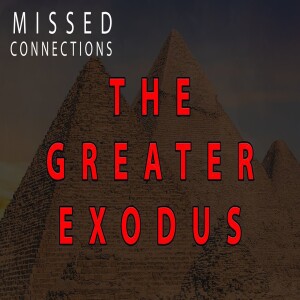
Saturday Oct 24, 2020
Saturday Oct 24, 2020
The Greater Exodus - Missed Connections
This Bible teaching from Founded in Truth Fellowship, possibly delivered by Matthew Vander Els, explores how the authors of the New Testament intricately weave their narratives about Jesus, or Yeshua, with the stories and themes of the Old Testament. The central argument is that these connections are not accidental but deliberate, intended to reveal a grand, unified story of redemption culminating in Jesus Christ. The teaching emphasizes that understanding these connections is crucial for grasping the true significance of Jesus and His mission.
Many readers, when engaging with biblical texts, often view them as isolated historical accounts. For instance, the stories of the Garden of Eden or Noah's Ark might be perceived merely as records of past events, without recognizing the deeper symbolic layers and connections they hold. This limited perspective, according to the teaching, can lead to missing the profound "hyperlinks and the patterns that the biblical authors left for us." These interwoven narratives expose a more extensive storyline throughout the Hebrew Bible, all pointing towards Yeshua.
The speaker uses the story of Noah's flood as an initial example. While it is a historical account of God's judgment and recreation, it also serves as a parallel to the creation in Genesis. Just as the earth was once covered in water and then dry land appeared, the flood brings about a reset of creation with Noah as a new Adam, having dominion over the animals. God's intention behind the flood was to correct the violence that had filled the earth. However, the narrative reveals that divine violence alone does not solve the problem of human violence, a motif that continues throughout the Old Testament. Noah's subsequent actions after leaving the ark, such as planting a vineyard, getting drunk, and becoming naked, echo the failings of Adam, highlighting a recurring cycle. This cyclical nature of human fallibility sets the stage for the arrival of Yeshua.
The teaching then shifts to the New Testament, focusing on how the Gospel writers intentionally portray Jesus. Matthew, in particular, is highlighted for presenting Jesus as the new and greater Moses. Matthew structures Jesus' teachings into five sections, drawing a direct parallel to the five books of the Torah given by Moses. Furthermore, Matthew emphasizes striking similarities between the childhoods of Moses and Jesus. Just as the evil King Pharaoh attempted to kill Moses through the slaughter of infants in Egypt [Exodus 1:22], King Herod sought to kill the infant Jesus through a similar act [Matthew 2:16]. The midwives who deceived Pharaoh [Exodus 1:17] find a parallel in the wise men who tricked Herod [Matthew 2:16]. Moses was hidden from Pharaoh [Exodus 2:2], and Joseph was told to hide Jesus from Herod [Matthew 2:13]. Both Moses and Jesus found refuge in Egypt [Exodus 2:3, Matthew 2:13-15]. These deliberate parallels underscore Matthew's aim to present Jesus as the prophesied "one likened unto Moses," the true prophet who would deliver the essence of the Torah in a way that would truly bless humanity.
The expectation after the Babylonian exile was a new Passover and a greater exodus, where God would redeem His people, establish a new Davidic king, and usher in God's kingdom. The New Testament authors argue that Jesus is the one leading this greater exodus, not a physical journey but a liberation into a new creation, a freeing from sin and death through His ministry, death, and resurrection.
For more Bible Teachings, click here.
Application for Everyday Life
Recognize the Bible as a Unified Narrative: Understand that the Old and New Testaments are not separate books but interconnected parts of a single, overarching story of God's plan for humanity.
Look for Deeper Meanings: When reading biblical stories, go beyond the surface-level historical account and seek the underlying themes, patterns, and connections to other parts of Scripture.
See Jesus in the Old Testament: Recognize that the Old Testament foreshadows and points towards the person and work of Jesus Christ, the promised Messiah.
Understand the "Greater Exodus": Grasp that Jesus' sacrifice and resurrection provide a liberation from the bondage of sin and death, a spiritual exodus that transforms lives.
Live a "Redeemed Life": Embrace the freedom and new life offered through Jesus, striving to reflect God's image and participate in the divine community of love.
Engage with Scripture Actively: Don't just passively read the Bible; meditate on it, digest it, and seek to understand the bigger story of salvation revealed within its pages.
References
Exodus 1:17 https://biblehub.com/exodus/1-17.htm
Exodus 1:22 https://biblehub.com/exodus/1-22.htm
Exodus 2:2 https://biblehub.com/exodus/2-2.htm
Exodus 2:3 https://biblehub.com/exodus/2-3.htm
Matthew 2:13 https://biblehub.com/matthew/2-13.htm
Matthew 2:16 https://biblehub.com/matthew/2-16.htm
Matthew 17:1 https://biblehub.com/matthew/17-1.htm
Luke 9:30 https://biblehub.com/luke/9-30.htm
Luke 11:19 https://biblehub.com/luke/11-19.htm
John 2 https://biblehub.com/john/2.htm
Books and Resources Mentioned
The Bible by Various Authors
Note: This article contains affiliate links.

Saturday Oct 17, 2020
Saturday Oct 17, 2020
The Skull Crusher in the Bible - How Mary Became the New Eve
In this Bible teaching delivered at Founded in Truth Fellowship by Matthew Vander Els, the focus is on a foundational concept in the Bible: the promise in Genesis 3:15 that the "seed of the woman" will crush the head of the serpent, often referred to as the "skull crusher" prophecy. This teaching explores how this initial promise unfolds throughout the Old Testament and finds its ultimate fulfillment in the New Testament with Mary and her son, Jesus (Yeshua).
The First Gospel: Proto-Evangelium
The teaching begins by examining the creation story in Genesis, highlighting God's creation of a good world and humanity's role as God's image-bearers with dominion over creation. However, this harmony is quickly broken in Genesis 3 when the serpent, described as crafty ("arum" in Hebrew), deceives Eve, leading to the fall of mankind. As a consequence of their disobedience, God pronounces judgment, including a curse upon the serpent. Within this curse, in Genesis 3:15, lies the Proto-Evangelium, the first gospel message. God declares that there will be enmity between the serpent and the woman, and between their seeds. Critically, God states that the seed of the woman will crush the serpent's head, while the serpent will strike the seed's heel. This prophecy introduces the theme of a future deliverer who will ultimately defeat the force of evil, though not without suffering.
Patterns of Skull Crushing in the Old Testament
The message then traces a recurring pattern throughout the Old Testament where women play a role in defeating enemies who embody the "seed of the serpent." The speaker emphasizes that this isn't solely about physical lineage but also about allegiance. Examples highlighted include:
Yael: In Judges 4 and 5, Yael, the wife of Heber the Kenite, defeats Sisera, the general of Javen's army, by crushing his skull with a tent peg. Yael's action is celebrated with the words, "Most blessed of women be Yael," a phrase that echoes later praise for Mary.
The unnamed woman in the story of Abimelech: In another instance, an unnamed woman in Judges 9 drops a millstone on the head of Abimelech, a wicked king, leading to his death.
David and Goliath: The story of David and Goliath in 1 Samuel 17 is also presented in this pattern. Goliath, the Philistine giant, is described with language that subtly links him to the serpent, such as his bronze armor ("nakashet," similar to "nakosh," snake) and the description of his armor as having scales. His name, Golgoliot, is also similar to the Hebrew word for skull. David, representing the seed of the woman, defeats Goliath by crushing his head with a stone. However, the speaker notes that the spirit of the serpent's enmity re-emerges in Saul, highlighting that the issue is one of the heart and allegiance.
These stories are not seen as the ultimate fulfillment of the Genesis 3:15 prophecy but rather as foreshadows and consistent patterns pointing towards the coming deliverer. The Old Testament, according to the teaching, reveals humanity's inability to fully live out God's calling, even with the gift of the Torah, because of the condition of their hearts. This leads to the prophetic messages of a new heart and a new spirit, as seen in Ezekiel 36:26 and Jeremiah 31:31, and the vision of a new creation in Isaiah 65:17 where the serpent's ultimate defeat is implied by it eating dust.
Mary, the New Eve, and the Ultimate Skull Crusher
The teaching transitions to the New Testament, specifically Luke's Gospel, where Elizabeth greets Mary with the words, "Blessed are you among women, and blessed is the child that you bear." This echoes the blessing of Yael and signals Mary's significant role in fulfilling the Proto-Evangelium. The speaker suggests that Mary can be seen as the "new Eve," just as Jesus is the "new Adam." Where Eve's offspring was prophesied to crush the serpent, Mary is the woman whose seed, Jesus, will ultimately accomplish this.
The Gospel of John is also examined, noting how John begins his account "in the beginning," mirroring Genesis 1. John's narrative is interpreted as a "new creation account" where life is found only through Jesus. The seven-day structure observed by some scholars in John's early chapters is discussed, culminating in the wedding at Cana on the seventh day. At this event, Jesus performs his first miracle at Mary's prompting, and the speaker highlights the seemingly unusual way Jesus addresses Mary as "woman." This is explained as a deliberate connection back to the "woman" in Genesis 3:15, Eve, reinforcing Mary's role in the unfolding of the skull crusher prophecy.
The Book of Revelation chapter 12, which depicts a woman giving birth to a child who will rule all nations and defeat the dragon (serpent), is also linked to Mary, either directly or as a representation of the people of God who bring forth the Messiah. The teaching emphasizes the parallels between Eve and Mary: Eve contributed to the fall through temptation, while Mary initiated Jesus' miraculous ministry; Eve was present at the beginning of sin, while Mary was present at the foot of the cross.
Ultimately, the teaching concludes that Jesus Christ is the ultimate "skull crusher." Colossians 2:15 is cited, stating that through the cross, Jesus disarmed the powers and authorities, triumphing over them. The serpent's head is crushed through Jesus' death and resurrection, offering forgiveness and a new creation to those who pledge allegiance to Him. Furthermore, Romans 16:20 is referenced, suggesting that believers, indwelt by the Spirit of God, also participate in this victory over evil.
Application for Everyday Life
Embrace the hope of the Gospel: The core message of the Bible is the good news of Jesus' life, death, and resurrection, offering forgiveness and peace with God. This should be a central focus in daily life.
Recognize the ongoing conflict: The pattern of the seed of the woman versus the seed of the serpent illustrates an ongoing spiritual battle. Be aware of the forces that oppose God's will in your life and the world.
Align your allegiance: Your heart's allegiance determines your spiritual lineage. Consciously choose to follow Jesus as King and live according to His Kingdom principles.
Embrace the new creation: Through faith in Jesus, you are part of a new creation, empowered by the Holy Spirit. Live in the reality of this new life and the victory won on the cross.
Participate in the victory: As believers indwelt by the Holy Spirit, you have been given victory over evil. Rely on God's peace to conquer challenges in your life.
Study the Bible deeply: The richness of the biblical narrative, with its patterns and connections, offers deeper understanding and strengthens faith. Engage with Scripture regularly and seek to understand its overarching story.
To find more Bible Teachings, click the link.
Resources Mentioned
The Bible by various authors
Note: This article contains affiliate links.
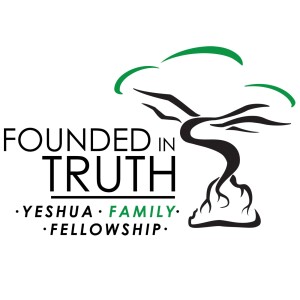
Sunday Sep 27, 2020
Sunday Sep 27, 2020
Yom Kippur Service 2019
Welcome to this special message from Founded in Truth Fellowship, a fellowship that considers itself more than just a gathering but a family united in truth and love, worshipping the King of Kings, the Lord of Lords, and the Son of God. This message commemorates Yom Kippur, also known as the Day of Atonement, the Day of Purgation, or the Day of Purging, which is regarded by many as the most holy day of the year. While the service is being livestreamed due to current circumstances, this format also allows broader participation in this significant event. Tonight's service will include elements of edification and a teaching message delving into the profound meaning of this day, particularly for believers in Jesus, or Yeshua. We begin with a prayer acknowledging God's mercy and love in providing forgiveness and atonement through His Son, Yeshua, asking for a reminder of areas needing change and the strength to address them.
Yom Kippur holds a pivotal position in the ancient Israelite religious calendar. Detailed accounts of it are found in Leviticus 16. It served as a central day when the sins, transgressions, and iniquities of Israel were purged from God's sight and from the inner sanctuary. While many might think this day was solely about the forgiveness of the people's sins, its practical function extended to the cleansing of the tabernacle from the metaphysical residue believed to accumulate due to the people's offenses against God. Leviticus 16:16 explicitly states that the purpose of the day was to make atonement for the most holy place because of the uncleanness and rebellion of the Israelites, regardless of their specific sins. Thus, the primary aim was the purification of the holy place, not just the absolution of the people.
For more Bible Teachings, click the link.
Application for Everyday Life
Reflect on personal shortcomings: Take time to honestly assess areas in your life where you have fallen short of God's standards and your own intentions.
Seek forgiveness: Consciously ask God for forgiveness for specific sins and transgressions, embracing His mercy offered through Yeshua.
Extend forgiveness to others: Reflect on any unresolved hurts or offenses and make a deliberate choice to forgive those who have wronged you.
Practice letting go: Identify burdens, resentments, or negative patterns that you are holding onto and intentionally release them, trusting in God's cleansing and healing.
Embrace joy in forgiveness: Recognize the joy that comes from being forgiven and from extending forgiveness, allowing it to impact your daily interactions and outlook.
Cultivate a lifestyle of repentance: Yom Kippur is not just a one-day event but a reminder to continually turn away from sin and towards God's grace in your daily life.
Remember Jesus' sacrifice: Reflect on the ultimate sacrifice of Jesus as the fulfillment of Yom Kippur, providing eternal atonement and access to God's presence.
Seek to cleanse your inner sanctuary: Just as the ancient tabernacle was cleansed, strive to purify your heart and mind from sin and negativity through prayer and the study of God's Word.
Live in the reality of freedom: Just as the Jubilee announced freedom, live in the freedom from sin and its consequences that is offered through Jesus.
Make a commitment to change: Identify specific areas where you need to grow and commit to taking practical steps towards positive change.
References
Bible Verses:
Leviticus 16
Leviticus 16:16
Leviticus 4
Leviticus 23:32
Leviticus 23:26
Acts 27:9
Deuteronomy (implied reference to Passover connection)
Romans 3:23-26
Hebrews 9:6-12
Psalm 32:3
Philippians 1:9-11
Books and Resources:
The Bible by Various Authors
The Mishnah (mentioned as a second-century Jewish text)
Practical article on how to celebrate Yom Kippur by Tyler Rosenquist (link in video description, not directly provided in sources)
Note: This article contains affiliate links.

Sunday Sep 27, 2020
Sunday Sep 27, 2020
Yom Kippur Service 2019
This Bible teaching from Founded in Truth Fellowship, likely delivered by Matthew Vander Els, focuses on the profound significance of Yom Kippur, the Day of Atonement, within its historical Jewish context and its enduring relevance for believers in Jesus, or Yeshua. The message emphasizes that Yom Kippur is far more than just a day for individual repentance; it is a central day in God's calendar that speaks to the very nature of sin, forgiveness, and God's desire for reconciliation with humanity.
Yom Kippur, also known as the Day of Purgation or Purging, holds immense importance in the religious calendar of ancient Israel, with its detailed instructions found in Leviticus chapter 16. While many might perceive this day solely as a time for the forgiveness of personal sins, the teaching clarifies that its practical function extended to the cleansing of the tabernacle itself. It was believed that the transgressions of the people against God left a kind of metaphysical residue that needed to be purged from the holy place. Leviticus 16:16 explicitly states this purpose: "In this way we will make atonement for the most holy place because of the uncleanliness and rebellion of the Israelites, whatever their sins have been."
The tabernacle was structured with three areas of graded holiness: the outer court, the holy place, and the holiest of holies. Each area had specific altars where blood offerings were applied. In the outer court stood the brazen altar, where the majority of offerings were burnt. When an Israelite accidentally sinned, they would bring a goat, and its blood would be applied to the corners of this altar, as detailed in Leviticus chapter 4. Moving inward, the holy place housed the candelabra (menorah), the table of showbread, and the altar of incense, which served as the second altar. According to Leviticus 4, if a king, priest, or community leader accidentally sinned, their higher status meant their sin had a greater impact, requiring a more significant sin offering – a bull – whose blood was applied to this altar. The teaching highlights that in Leviticus, blood served as a symbolic detergent or conduit, representing a means to remove the blemish or stain of sin. The close relationship between Israel and the tabernacle meant that Israel's sin could tarnish God's house, necessitating the cleansing power of blood.
The holiest of holies, located behind a veil (or two in the later temple), was the most sacred space, housing the Ark of the Covenant. Entry beyond this veil was strictly forbidden, except for the high priest on Yom Kippur. On this unique day, the high priest would humble himself by removing his priestly garments and donning all white. An elaborate service would then commence, involving several animals, primarily a bull and two goats. One goat was randomly selected for slaughter, while the other was part of a distinctive ceremony where it was set free. The high priest would enter the holiest of holies with coals from the outer altar and specific incense, creating a cloud of smoke. He would then sprinkle the blood of the bull on the Ark for the intentional sins and transgressions of the priesthood. Following this, he would re-enter with the blood of the slaughtered goat, sprinkling it on the Ark of the Covenant to purge the intentional sins of God's people from God's "throne room." The high priest would then move backward into the holy place, sprinkling blood on the altar of incense, and finally into the courtyard, where the blood mixture was sprinkled on the brazen altar. This process symbolized a cleansing from the innermost sanctuary outward.
An intriguing aspect of Yom Kippur was the ritual involving the second goat, the scapegoat. After the blood purifications, the high priest would lay both hands on the head of this living goat and confess all the sins and transgressions of Israel over it, as if transferring them from the holy place to the animal. The Torah commanded that this scapegoat be led away from the city into the wilderness, never to be seen again. This act dramatically symbolized the removal of Israel's sins from God's presence.
Application for Everyday Life:
Reflect on personal sins and shortcomings: Take time for honest self-examination and identify areas where you have fallen short of God's standards.
Seek forgiveness and extend forgiveness to others: Acknowledge your sins before God and actively choose to forgive those who have wronged you.
Embrace the concept of cleansing: Recognize that through Jesus's sacrifice, there is a way to be cleansed from the residue of sin in your life.
Let go of burdens: Identify any unforgiveness, bitterness, or past hurts you are holding onto and consciously release them.
Cultivate a lifestyle of repentance and growth: Yom Kippur is not just a one-day event but an opportunity to cultivate an ongoing attitude of turning away from sin and growing in righteousness.
Find joy in forgiveness: Recognize the profound joy that comes from knowing your sins are forgiven and celebrate God's mercy.
Remember the ultimate sacrifice of Jesus: See Yom Kippur through the lens of the cross, recognizing Jesus as the ultimate high priest and sacrifice who secured eternal redemption.
Ultimately, this teaching emphasizes that Yeshua has brought full meaning to Yom Kippur, offering believers a continuous opportunity to let go of sin, embrace God's mercy, and experience the joy of forgiveness. It is a reminder that through Jesus, we have access to the true mercy seat, where our sins are purged, and we are reconciled with God.
For more Bible Teachings, visit our website.
References
Leviticus 16: biblehub.com/leviticus/16.htm
Leviticus 4: biblehub.com/leviticus/4.htm
Leviticus 23:32: biblehub.com/leviticus/23-32.htm
Acts 27:9: biblehub.com/acts/27-9.htm
Romans 3:23: biblehub.com/romans/3-23.htm
Hebrews 9:6: biblehub.com/hebrews/9-6.htm
Psalm 32:3: biblehub.com/psalms/32-3.htm
Philippians 1:9: biblehub.com/philippians/1-9.htm
Resources Mentioned
The Mishnah: The Mishnah
Note: This article contains affiliate links.
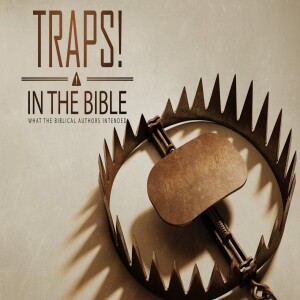
Saturday Sep 26, 2020
Saturday Sep 26, 2020
Traps in the Bible - How the Biblical Authors Convict
In this insightful Bible teaching from Founded in Truth Fellowship, community pastor Matthew Vander Els explores the fascinating ways in which the authors of the Bible intentionally crafted their narratives to do more than just tell stories. He suggests that these inspired writers, whom he describes as literary geniuses, embedded "traps" within their texts. These traps are designed to lead readers into certain assumptions and feelings, only to reveal a deeper truth that often requires self-reflection and repentance. Vander Els emphasizes that understanding these nuances, which can sometimes be lost in translation, allows for a richer and more impactful engagement with the biblical text.
The Trap in the Story of Jonah
The first trap discussed centers on the well-known story of Jonah. Vander Els points out that many people are familiar with a simplified version, perhaps even the VeggieTales rendition, which often misses the story's central message. He explains that scholars debate the genre of Jonah, with some suggesting it's a historical narrative, while others, like Walter Bergman, term it a "parable narrative." This means the events and details are intentionally arranged to convey a specific lesson. Professor Tim Mackey even characterizes Jonah as a "dark comedy" due to its ironic and sometimes exaggerated tone.
Vander Els highlights the humor and irony from the beginning of the story. Jonah, whose name means "faithful dove," is commanded to go to Nineveh, the capital of Assyria, a brutal enemy of Israel. This sets up an immediate conflict: a holy man of God being sent to bring a message of repentance to his nation's oppressors. Instead of obeying, Jonah runs in the opposite direction, going down to Joppa and boarding a ship to Tarshish – symbolically moving further and further away from God. The author emphasizes Jonah going "down" repeatedly, even to the lowest parts of the ship, illustrating his desire to distance himself from God's mission.
As the story unfolds, a great storm arises, and the pagan sailors, more spiritually aware than Jonah at this point, question him. When Jonah reveals he is a Hebrew who fears the Lord but is fleeing from Him, the sailors are terrified. Ironically, while Jonah refuses to repent, the pagan sailors offer sacrifices to God. Even while swallowed by a giant fish, Jonah composes a psalm, showcasing a level of comfort in his self-imposed exile.
Eventually, Jonah delivers a remarkably short, five-word sermon to Nineveh: "Forty days and Nineveh will be overthrown." Surprisingly, the entire city, from the king down to the animals, repents. This outcome deeply upsets Jonah, who is furious that his enemies received God's grace instead of His wrath. The story concludes with God questioning Jonah's compassion for a plant that provided him shade versus his lack of compassion for the vast population of Nineveh who were ignorant of God's ways.
The trap, Vander Els argues, is for the reader to righteously condemn Jonah for his disobedience and lack of compassion. The moment we feel superior to Jonah, we miss the point. The question God poses to Jonah – "Should not I pity Nineveh?" – is also directed at us. Are we willing to extend God's love and mercy to our own "enemies"? Are we finding excuses to avoid sharing the good news of God's forgiveness and love? The story, likely written after the Babylonian exile, would have been particularly convicting for the returning Israelites, challenging them to show mercy even to those who had wronged them.
Application for Everyday Life (Jonah):
Examine your own heart for any resentment or lack of compassion towards those you consider your enemies.
Reflect on whether you are actively sharing God's message of mercy and love with others, even those you find difficult.
Be mindful of finding justifications for avoiding God's calling in your life.
The Trap in the Parable of the Tax Collector and the Pharisee
The second trap discussed is found in Jesus' parable of the tax collector and the Pharisee in Luke chapter 18. Vander Els explains that Jesus uses this story to address those who frequently look down on others, considering themselves more righteous. Pharisees were generally seen as religious leaders who meticulously followed the Torah. In contrast, tax collectors were Jewish individuals who worked for the Roman Empire, often extorting their own people, making them widely despised.
The parable depicts two men going to the temple to pray. The Pharisee stands apart and boasts to God about his righteousness: he is not like other sinners, including the nearby tax collector; he fasts twice a week and tithes diligently. The tax collector, on the other hand, stands at a distance, humbly beating his chest and praying, "God, have mercy on me, a sinner." Jesus declares that the tax collector, not the Pharisee, went home justified before God.
Vander Els highlights the trap embedded in this familiar story. As readers, we naturally empathize with the humble tax collector and likely view the Pharisee as self-righteous and arrogant. We might even thank God that we are not like the Pharisee. However, at the very moment we look down on the Pharisee and feel superior, we fall into the same trap of self-righteous judgment. We become the Pharisee in the story by judging the Pharisee. This parable serves as a powerful paradox of self-reflection, urging us to humble ourselves and avoid looking down on others, even those we perceive as sinners or oppressors. True righteousness comes from God's mercy, not from comparing ourselves favorably to others.
Application for Everyday Life (The Parable of the Tax Collector and the Pharisee):
Be aware of any tendencies to compare yourself to others and feel superior based on your perceived righteousness or good deeds.
Cultivate humility and recognize your own need for God's mercy.
Judge others with righteousness, focusing on biblical standards, rather than with self-righteousness, based on your own perceived superiority.
The Trap in the Reign of King Solomon
The final trap discussed revolves around the seemingly glorious reign of King Solomon, as described in 1 Kings 9 and 10. Initially, the biblical author presents Solomon as the most successful king of Israel, highlighting his secure borders, peace treaties, strong army, and the building of the first temple. This creates a sense of excitement and admiration for Solomon's achievements. However, Vander Els points out that this is the peak before Israel's decline.
The narrative subtly reveals a dark undercurrent to Solomon's success. 1 Kings 9:15 mentions the "forced labor that King Solomon drafted to build the house of the Lord and his own house." This detail is jarring, as it reveals that the temple to Yahweh, the God who freed Israel from slavery, was built using slave labor. Furthermore, the text specifies that Solomon enslaved the remaining people from weaker nations while exempting the Israelites, turning them into a military force. This contradicts Israel's calling to be a light to all nations, ambassadors of God's kingdom, and bearers of His image.
Application for Everyday Life (The Reign of King Solomon):
Critically evaluate the sources of success and prosperity, both in your own life and in the wider world.
Prioritize God's values of justice, mercy, and compassion over worldly measures of success like wealth and power.
Be mindful of how your actions might contribute to the exploitation or marginalization of others, even unintentionally.
To find more Bible Teachings, click here.
Note: This article contains affiliate links.
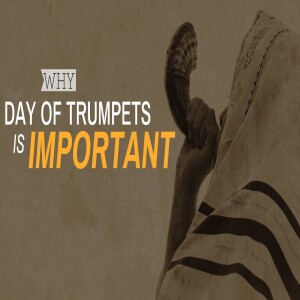
Saturday Sep 19, 2020
Saturday Sep 19, 2020
Why Day of Trumpets is Important
The Founded in Truth Fellowship welcomes its community to delve into the significance of a special day in the biblical calendar: the Feast of Trumpets, also known as Yom Teruah and Rosh Hashanah. This day, explained by Matthew Vander Els, is not merely a religious observance but a profound memorial with implications for understanding God, history, and our present lives.
The speaker highlights that the Feast of Trumpets is one of the seven biblical feasts mentioned in the Bible, each designed to remind Israel of specific aspects of God, serve as a memorial, or reinstitute formal worship. These feasts, referred to as "biblical feasts of the Lord" in Leviticus 23, are crucial for understanding the context and message of the Bible.
Before the advent of written languages, stories were the primary means of passing down history and traditions. The biblical feasts, in this context, serve as recurring narratives, telling the story of God's interactions with humanity across generations. Just as Passover retells the story of God's deliverance from slavery in Egypt, emphasizing a greater exodus from sin and death through Yeshua (Jesus), so too does the Feast of Trumpets carry a significant story.
Other feasts like Unleavened Bread, Firstfruits (Yom HaBikarim), and Shavuot (Pentecost) also function as memorials of God's acts and provisions. Yom Teruah, or Rosh Hashanah, stands as a memorial with a forward-looking aspect, marking the beginning of the agricultural new year with the early rains. This season signifies a new cycle of God's promised blessings. Furthermore, Yom Teruah serves as a reminder that God remains on His throne, regardless of worldly circumstances. It is also a day to reflect on God's justice and our actions in the past year.
Interestingly, the biblical accounts in Leviticus 23 and Numbers 29 offer relatively few specific details about the observance of Yom Teruah compared to other feasts like Passover, Yom Kippur, and the Feast of Tabernacles. While other feasts have extensive chapters dedicated to their practices, Yom Teruah is described concisely as a "memorial of trumpets," a day for meditation and remembrance of who God is. It is also known as a day of shouting or clamor (teruah), occurring on the first day of the seventh month, a time for gathering, ceasing regular work, and making a loud noise by blowing trumpets and shouting.
Various theories exist regarding the primary purpose of Yom Teruah. One Jewish scholar, Baruch Levine, suggested its sole purpose was to announce the upcoming Feast of Tabernacles (Sukkot), which occurs two weeks later. While seemingly minimal, this highlights the idea of Yom Teruah as a proclamation of something significant. The number seven holds biblical significance, and the feast's commencement on the seventh new moon of the year further underscores its importance.
The sounding of the trumpet (shofar) is central to Yom Teruah. In Exodus 19, the trumpet blast at Mount Sinai signaled the people of Israel to consecrate themselves and approach God. Thus, the trumpet represents a signal of drawing near to God. Historically, Yom Teruah occurs at the end of the hot, dry summer in Israel, a time when vegetation withers. Pagan cultures in the region had myths, such as the cycle of Tammuz, to explain this seasonal die-off and renewal. In contrast, Israel's fall feasts, including Yom Teruah, celebrated Yahweh as their provider and king during this season of renewal when the land begins to turn green again. The blowing of trumpets proclaimed God's enduring kingship.
Over time, Jewish tradition has associated Yom Teruah with themes of God's kingship and judgment, including the belief that the Book of Life is opened on this day. These themes, while not explicitly detailed in the initial biblical mentions, naturally evolved from the understanding of Yom Teruah as a proclamation of God's sovereignty and a signal to prepare for the subsequent Day of Atonement (Yom Kippur) and the Feast of Tabernacles.
Yom Teruah serves as a crucial reminder that God is in control. In a world often filled with distractions, the "memorial of clamor" is meant to refocus our attention on the King who already reigns. As believers, our primary allegiance is to the kingdom of heaven (Philippians 3:20). We are called to be ambassadors of this kingdom while living in the present world. The example of early Christians during a plague in the Roman Empire illustrates this principle. Despite persecution, they cared for the sick, even their enemies, demonstrating the love and mercy of Yeshua in a time of crisis. This historical account serves as a challenge to believers today to rise above the divisions and hatred of the world and reflect God's character.
Psalm 81 is seen as attesting to the significance of this feast day, referred to as the day of shouting that occurs on the new moon. While the psalm begins with the theme of Yom Teruah, it also recounts Israel's redemption from Egypt and their subsequent turning away from God. By the first century AD, Yom Teruah had become associated with approaching the king, the king's coming, times of judgment, and enthronement. Philo of Alexandria described it as the "great trumpet feast," linking it to the trumpet sound at Mount Sinai and interpreting the trumpet as a symbol of war and a thank-offering to God, the peacemaker.
Today, the observance of Yom Teruah involves a community coming together in worship, giving a shout to the Lord, and blowing the shofar. This practice signifies the beginning of a season of change, both communally and individually. It is a time to reflect on the past year and look forward to what God has prepared, with the understanding that God's kingship remains constant.
To find more Bible Teachings, click the link.
Application for Everyday Life
Refocus on God's Kingship: Take time to consciously acknowledge God's sovereignty in all aspects of your life, especially when worldly events or personal struggles seem overwhelming.
Reflect and Repent: Use this time as an opportunity for introspection, considering your actions over the past year and seeking reconciliation with God.
Proclaim Your Allegiance: Remember that your primary citizenship is in the kingdom of heaven, and let your words and actions reflect this allegiance above earthly political or social divisions.
Be an Ambassador of Love and Mercy: Inspired by the example of early Christians, actively seek opportunities to show kindness, compassion, and grace to others, even those who may hold opposing views or be considered enemies.
Listen for God's Call: Just as the trumpet at Sinai signaled a drawing near to God, be attentive to God's voice and direction in your life.
Anticipate Future Redemption: Hold onto the hope of God's ultimate redemption and the return of Yeshua, symbolized by the final trumpet blast.
Drive Away Distractions: Use the "clamor" of this day as a reminder to intentionally remove distractions that pull your focus away from God and His kingdom.
References
Leviticus 23
Numbers 29
Exodus 19
Philippians 3:20
Resources Mentioned
The Bible
Note: This article contains affiliate links.

Saturday Sep 12, 2020
Saturday Sep 12, 2020
The Hate We Love
In a powerful Bible teaching from Founded in Truth Fellowship, Matthew Vander Els addresses the pervasive issue of hatred and the critical importance of love for followers of Jesus Christ. He begins by acknowledging a universal longing for community rooted in truth and love, where individuals can worship God. However, he quickly delves into a challenging topic: the presence of hatred, not just towards others but within ourselves.
Vander Els confronts the tendency to soften the word "hate" by saying we merely "dislike" someone, suggesting that this is often a justification for a lack of love. He defines hatred, in a Christian context, as an inability or intentional ceasing to engulf someone with love. To understand this definition, he turns to the well-known passage in 1 Corinthians 13:4-8, where the Apostle Paul describes love as patient, kind, not envious, not boastful, not proud, not dishonoring, not self-seeking, not easily angered, keeping no record of wrongs, not delighting in evil but rejoicing in the truth, always protecting, always trusting, always hoping, always persevering, and never failing. This, Vander Els argues, is the standard of Christ-like love that should emanate from believers. Choosing to exclude anyone from this kind of love, he asserts, is what he calls hatred.
Expanding on this, Vander Els references Matthew 24:12, where Jesus speaks of a time when, due to increased wickedness, the love of most will grow cold. Here, Jesus equates a lack of vital love towards others with wickedness. This stark assessment underscores the seriousness of failing to love. Furthermore, 1 John 3:14-15 states that those who love their brothers and sisters have passed from death to life, while those who do not love remain in death, and anyone who hates a brother or sister is considered a murderer, lacking eternal life. This is a powerful indictment, highlighting the inseparable link between love for others and a genuine relationship with God through Jesus.
The teaching then tackles the common justifications for hatred. In today's polarized society, political differences often become breeding grounds for animosity. Vander Els uses hypothetical examples of Christians on opposing sides of the political spectrum, illustrating how easily one can judge and harbor hatred towards those with different political views, assuming they are not genuinely Christian or are intentionally opposing God's will. He points out the flawed logic of thinking that if someone supports a particular political figure or party, they must hate Christians or hold evil intentions, thus justifying reciprocal hatred.
Vander Els delves into the uncomfortable truth that we often love to hate. Our culture, he suggests, can even teach us to do so, as it can feel good to be angry and to react negatively towards those we dislike. This feeling of satisfaction comes from the avoidance of absorbing the negativity of the world; instead of being a barrier to hatred, we join in. He poignantly asks if we don't experience a degree of satisfaction when someone we dislike faces hardship.
For more Bible Teachings, click the link.
Application for Everyday Life
Examine your heart for hidden hatred: Honestly assess if there are individuals or groups towards whom you harbor negative feelings or intentionally withhold love.
Practice the definition of love from 1 Corinthians 13: In your interactions, strive to be patient, kind, unselfish, and forgiving.
Challenge justifications for dislike: When you find yourself rationalizing negative feelings towards someone, especially based on political or differing views, remember Jesus' call to love enemies.
Be aware of the temptation to enjoy others' misfortunes: Reflect on your reactions when someone you dislike faces difficulties, and consciously choose compassion over satisfaction.
Embrace your role as an ambassador of Christ: Recognize that you are called to show God's love and offer reconciliation to everyone, regardless of their background or beliefs.
Pray for your enemies: Actively follow Jesus' command to pray for those who mistreat or persecute you.
Seek to understand differing perspectives: Instead of immediately judging those with opposing views, try to understand their perspective with empathy.
Respond to negativity with kindness: When faced with hostility or offense, choose to respond with love and avoid repaying evil with evil.
Focus on hating evil, not individuals: Distinguish between harmful actions and the inherent worth of every person as someone Christ died for.
Remember the "new creation" reality: See others through the lens of Christ's redemptive work, recognizing the potential for transformation in everyone.
References
1 Corinthians 13:4-8 - biblehub.com/1_corinthians/13-4.htm
Matthew 24:12 - biblehub.com/matthew/24-12.htm
1 John 3:14-15 - biblehub.com/1_john/3-14.htm
Matthew 28 - biblehub.com/matthew/28.htm
Matthew 5-7 - biblehub.com/matthew/5.htm, biblehub.com/matthew/6.htm, biblehub.com/matthew/7.htm
Resources
The Bible by various authors
Note: This article contains affiliate links.
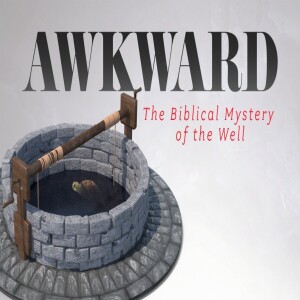
Saturday Aug 29, 2020
Saturday Aug 29, 2020
The Biblical Mystery of the Well - Awkward
Finding Community and Truth
Matthew Vander Els of Founded in Truth Fellowship begins by inviting listeners who are searching for something bigger than themselves, a community founded on truth and love, and a place to worship God. He acknowledges that the community has been affected by illness and asks for prayers.
The Power of Awkwardness in the Bible
The central theme of this teaching is the power of awkwardness, as explored through various stories in the Bible. Vander Els explains that we often become desensitized to the truly uncomfortable aspects of these ancient stories. The series, titled "awkward," aims to rediscover the original impact of these moments on their ancient readers.
He provides examples of these cringe-worthy moments, such as Adam and Eve realizing their nakedness in Genesis 3, Judah's realization that he slept with his daughter-in-law Tamar instead of a temple prostitute, and David's confrontation about his sin with Bathsheba and Uriah. These awkward exposures of sin and iniquities reveal our true selves, often mirroring how the world perceives us.
Vander Els draws a parallel to the discomfort of hearing one's recorded voice or seeing oneself on camera for the first time, noting that this is because our self-perception often differs from how others see us. Similarly, when our hidden sins are brought into the open, we face an uncomfortable reality.
Judah and Tamar: An Awkward Revelation
The story of Judah and Tamar illustrates this point. Judah believed himself to be a righteous patriarch, but his actions revealed his neglect of the vulnerable, specifically his own daughter-in-law, a widow. Facing this awkward truth was necessary for Judah's growth and alignment with God's will.
The Soap Opera of Jacob's Life
Vander Els then turns to the story of Jacob, describing it as a complicated "soap opera." He highlights the familial favoritism shown by Jacob's parents and Jacob's own favoritism between his wives, Leah and Rachel. Despite this, God does not show favoritism based on birth order.
The narrative focuses on Jacob's meeting with Rachel at a well. This encounter seems to begin a love story akin to "The Notebook," but a significant twist occurs. Jacob works for seven years to marry Rachel, and the Bible notes that these years felt like a few days because of his love for her (Genesis 29:20). This detail, Vander Els points out, reveals the hand of the biblical author emphasizing Jacob's love.
The Wedding Deception: Leah and Jacob
After seven years, Laban, Rachel's father and Jacob's uncle, hosts a grand feast for the wedding. However, in a shocking turn of events, Laban substitutes Leah, Rachel's older sister, for Rachel on the wedding night (Genesis 29:23). Jacob unknowingly marries Leah, leading to the awkward and dramatic realization the next morning.
Culturally, marriage at that time was primarily for childbearing, not necessarily for love. Jacob's desire to marry Rachel for love was somewhat unconventional for the era. Laban's perspective was likely that the older daughter, Leah, should be married first.
The Consequences and God's Control
Through no fault of their own, both Rachel and Leah find themselves in a difficult situation. Jacob ends up with two wives, and divorce was not a simple option in that culture, especially for Leah, as she would no longer be considered a virgin. Jacob favored Rachel, the one he loved, leaving Leah feeling unloved, lonely, and forgotten.
The scripture states that God heard Leah's cries and allowed her to have children (Genesis 29:31). While Jacob continued to favor Rachel, Leah found favor with God, who hears the cries of the broken. Rachel later became jealous of Leah's ability to conceive, adding to the complexity of the story. Despite the awkwardness and pain, God was still in control, paving the way for the dynasty of Jacob, who became Israel.
The Significance of Meeting at a Well
Vander Els highlights a recurring motif in the Bible: significant encounters, often leading to marriage or important relationships, taking place at a well. This pattern is seen in the stories of Isaac and Rebekah (Genesis 24), Jacob and Rachel, and Moses and Zipporah (Exodus 2). Each of these stories involves a journey, a woman at a well, the drawing of water, news of a visitor being shared, hospitality, and a joining together.
This motif is not coincidental; it is an intentional pattern emphasizing a divine theme within the biblical narrative.
Jesus and the Samaritan Woman: A New Well Encounter
The pattern continues in the New Testament with Jesus' encounter with the Samaritan woman at Jacob's well (John 4). This story also includes a journey, a woman at the well (identified specifically as Jacob's well), and the drawing of water. However, there's a twist: Jesus offers her "living water" instead of well water, connecting this to the life and vitality of heaven found in Him.
While the other well stories typically lead to marriage announcements, this encounter leads to something different: a unification of disparate peoples. Jesus claims that a time is coming when Samaritans and Jews will worship God together in spirit and in truth, transcending their religious and historical divisions (John 4:21). This unity can be seen as a metaphorical marriage bond.
The Samaritan woman, initially hesitant due to the social barriers between Jews and Samaritans, eventually recognizes Jesus as the Messiah (John 4:26). She becomes the first person to whom Jesus explicitly reveals this identity in John's Gospel, and she goes on to evangelize to her own community. Many Samaritans believed in Jesus because of her testimony (John 4).
God's Purpose in Awkwardness
Vander Els emphasizes that God often implements His love and plan in awkward and uncertain situations. The complicated situation of Jacob, Rachel, and Leah ultimately led to the formation of the nation of Israel. Leah's pain and affliction were acknowledged by God, who heard her cries (Genesis 29:32). Even in her position as the less favored wife, she found favor with God.
The Samaritan woman, an overlooked individual, received a pivotal revelation and became the first to share the message of hope in her community. This highlights that God often works through unexpected people and circumstances.
For more Bible Teachings, visit our website.
Resources Mentioned
The Bible by Jesus Christ
Note: This article contains affiliate links.

Saturday Aug 22, 2020
Saturday Aug 22, 2020
Certainly! Please provide the content you'd like me to add internal links to, and I'll format it accordingly.
Note: This article contains affiliate links.






